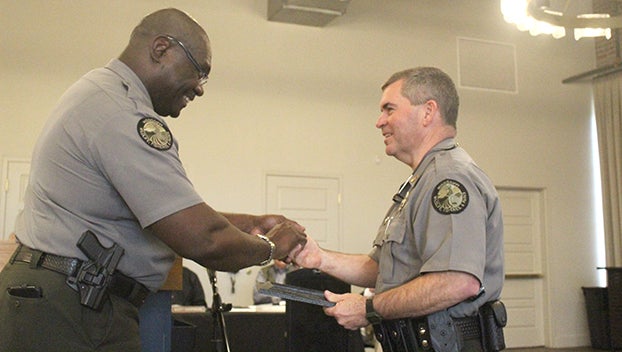Lincoln County can manage wildfire risk
Published 11:00 am Thursday, June 6, 2024

- A wildland firefighter with the Mississippi Forestry Commission in Hog Chain this past September.
BROOKHAVEN — Lincoln County is at a greater risk of wildfire than 75 percent of counties in the US according to USFS studies but it is not the end of the world. Active forest management can help reduce potential wildfire risk.
USFS reports a variety of methods can be used on a given landscape to achieve risk mitigation goals while supporting conservation values and sustainable practices.
Prescribed fire is one effective tool used by the USFS in the Homochitto National Forest to reduce wildfire risk and can be used by private land managers. Nearly 89 percent of forest land in Mississippi is privately owned.
Selective thinning of trees and shrubs is a way to reduce fuel load in areas where prescribed fire may not be an option. The management practice can help wildlife populations by allowing more sunlight to reach the ground and promoting herbaceous growth in the understory. Turkeys, deer and quail benefit from this diverse habitat.
Consult a Mississippi Forestry Commission forester or the private lands program at the Mississippi Department of Wildlife, Fisheries and Parks to develop a management plan for your property.
Landscape of fire
Before European settlement and subsequent efforts to suppress fire, wildfires were common in the southeastern US and southwest Mississippi. It was a natural disturbance and helped shape a diverse landscape for wildlife. Historically, wildfires would have started naturally from lightning strikes in the late growing season or by Native Americans in early habitat management for hunting.
Today’s landscape of fire in Lincoln County is classified as either rural pine forest with conversion to agriculture, rural agriculture with vulnerable communities and low wildfire potential and rural pine forests with intense fire and vulnerable communities.
Rural pine forest with conversion to agriculture was characterized by moderate pine forest cover, some forest land conversion to agriculture during the last two decades. USFS states the firescape has moderate potential for high-intensity fire, low population density and wildland-urban interface and moderate social vulnerability.
Characteristics of the rural agriculture with vulnerable communities and low wildfire potential firescape are areas with low forest cover, carbon stocks and fuel load. USFS states the firescape has a mild climate, low burn probability, low risk to structures, low wildfire hazard potential, high social vulnerability and moderate increase of natural (forest) land cover during the past two decades.
Rural pine forests with intense fire and vulnerable communities covers a majority of Mississippi and 94,564,758 acres across the southern US. Characteristics of this firescape are high pine forest cover, fuel load and carbon stocks. USFS states this firescape has strong potential for intense fire, low population density and high social vulnerability.
Reintroduction of prescribed fire into these systems can maintain a healthy landscape and reduce wildfire risk.





